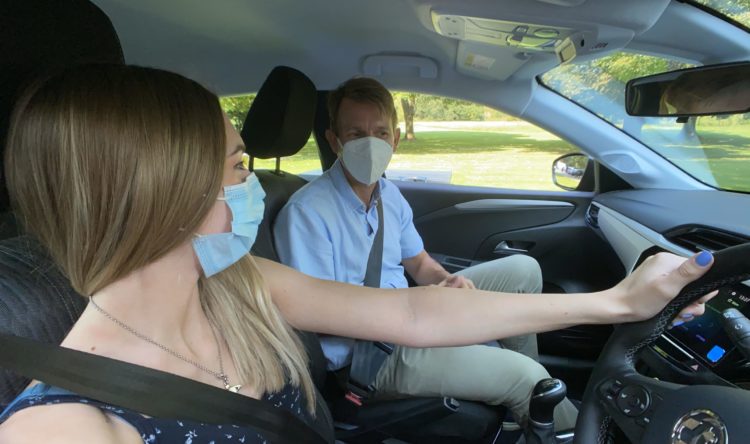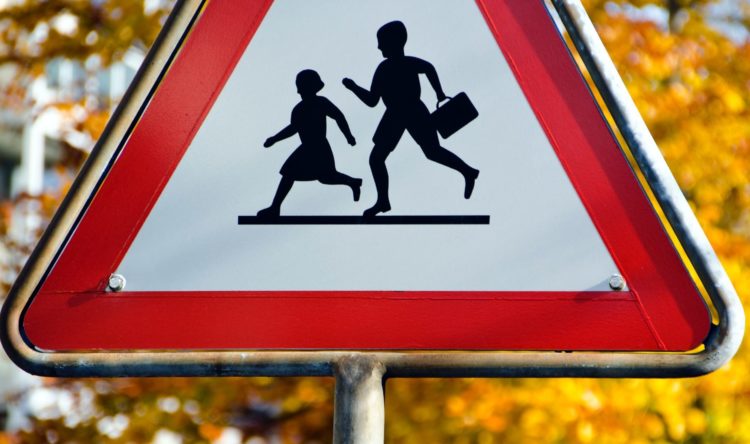No.1: Observation at junctions… Pt1
Okay pop pickers, this series analyses the ‘Top 10’ test failures, giving you some tips on teaching to help pupils avoid them in the future
This is the first of three articles about ‘Observation at Junctions’ – the No. 1 driving test fail point. Junctions feature twice in the top ten, with turning right having its own spot (No.4 in this series, which you can read in the February and March editions of Intelligent Instructor earlier this year). Whether turning right, left, straight ahead or anywhere else at a junction, effective observation is key for safety and a successful test outcome. On the IAM RoadSmart website, the introductory info about the report ‘Licensed to Skill’, commissioned by the IAM in 2016, states: “Human error factors including ‘loss of control’, ‘failed to look properly’, and ‘poor turn or manoeuvre’, accounted for 65% of fatal, 61% of serious and 68% of slight accidents. ‘Failed to look’ is the single greatest cause of crashes and this is consistent across all age groups. It is clear that only driver training can really address the key reasons that people crash.”. With observation and judgement being critical skills when dealing with junctions, it’s worrying, but perhaps not surprising, that failing to take effective observation at junctions is number one on the driving test fail chart.
Testing, Testing…
The driving test examiners guidance notes state: “The examiner should also note whether the candidate takes adequate and effective observation before entering the intersection, and that they do so with due regard for other road users.” If you are in the habit of sitting in on driving tests, you will have noticed that examiners watch the driver very closely at junctions, sometimes turning in their seat to look directly at the driver to see whether they make effective observation checks and exercise correct judgment at all types of junctions, ranging from quiet residential areas through to busy intersections.
Typically, examiners will be looking to see whether candidates: Make ‘effective observation’ before moving into a junction, and make sure that it’s safe before proceeding. Watch out for cyclists and motorcyclists coming up on the left, and pedestrians who are crossing. The important point to stress is that effective observation is more than just looking – it’s looking and acting appropriately on what is seen. In addition to ‘obvious’ observation issues, observation will almost always be a factor in junction behaviour that leads to test failure, so it is essential that you give added focus to this throughout the driver training period, leaving pupils in no doubt as to the importance of looking, seeing and acting, not just to pass the test, but to remain safe on the road at all times.
Approach speed: Approach speed might be a control issue, but this is unlikely in an experienced learner. It is far more likely that the driver has not fully scanned and assessed the situation ahead.
Position generally: Observation will almost always be at the root of positioning problems; a classic cause is to spend too much time ‘staring’ in one direction only when the car is moving, rather than maintaining visual scanning.
Position turning left: Lack of scanning and looking at the kerb (for a reference point?) can result in the car swinging out to far or clipping the kerb on left turns.
Position turning right: Here ‘short observation’ can be an issue, especially if the learner has been taught to use reference points for positioning rather than being helped to develop their spatial awareness, especially on the approach.
Right corner cut: A common cause of this error will be trying to beat approaching traffic. However, observation is clearly a major factor from a safety point-of-view generally because a learner who does this probably doesn’t fully understand the importance of checking the side road before turning.
One Two, One Two…
Observation at junctions is a critical skill, but the fact that it tops the DVSA fail list suggests that it is often not being taught or assessed as well or as consistently as it might be. If learners don’t recognise the errors that they are making at junctions, those errors will be repeated and become habitual. While this is tough for those who fail the test, they could be life-threatening for those who pass. Therefore, it is absolutely essential that instructors are fully aware of what learners are doing when approaching and waiting at junctions. One reason, perhaps the main reason, for observation errors is that many instructors are so busy ‘looking after safety’ at junctions, that they don’t pay sufficient attention to the learner and, as a result, they are highly likely to miss observation errors. Next time: Considering your observation at junctions; just how much are you watching your learners?







